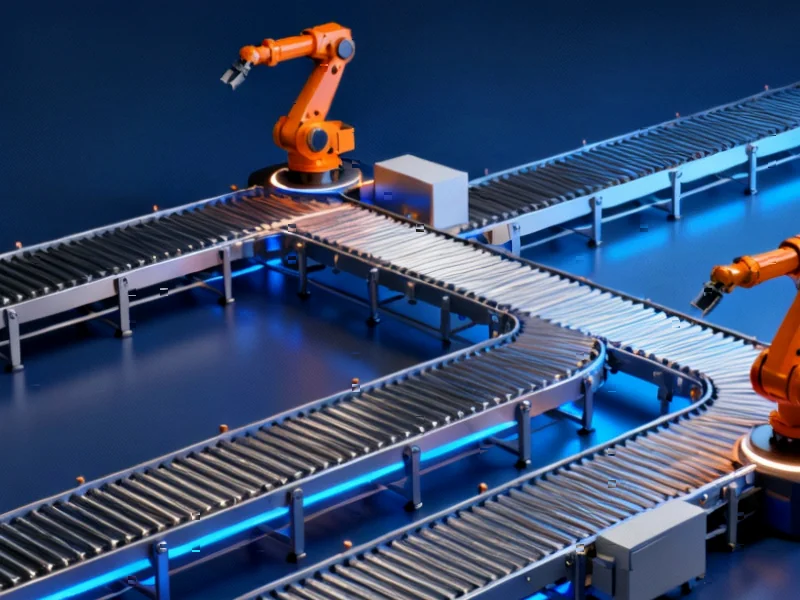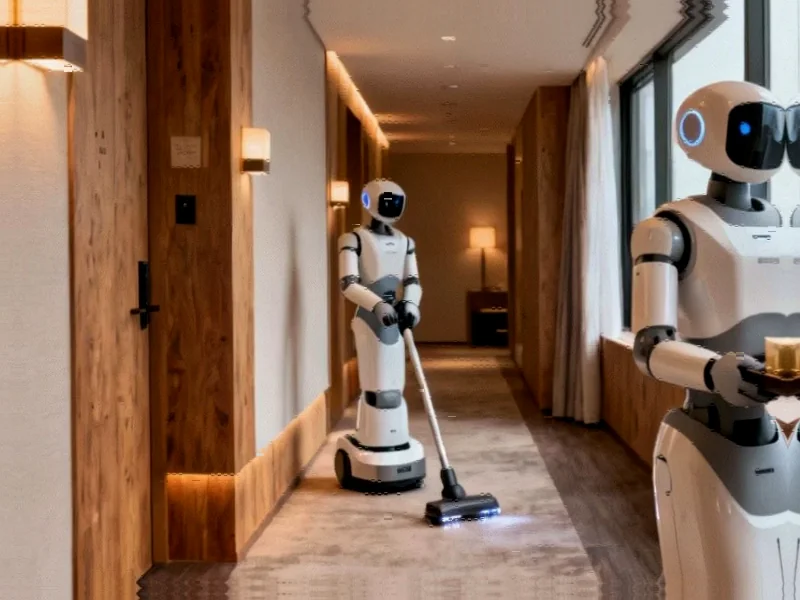The Automation Acceleration
Amazon is embarking on one of the most ambitious automation transitions in corporate history, with internal documents revealing plans to operate 75% of its operations using robotics within the coming years. This strategic shift represents a fundamental reimagining of how the world’s second-largest employer approaches its workforce and operational efficiency. The company’s vision extends beyond mere cost reduction to creating a more streamlined, technology-driven enterprise that can handle projected doubling of product sales by 2033 with significantly fewer human workers.
Table of Contents
The Human Workforce Equation
Currently employing approximately 1.5 million people globally, Amazon’s automation initiative could displace over half a million positions according to internal projections. The transformation is already visible in facilities like the Shreveport, Louisiana warehouse, where approximately 1,000 robots handle packaging and shipping tasks, allowing the company to operate with 25% fewer employees. By 2026, this same facility is projected to require just half the workforce it would have needed before automation implementation.
The scaling plan is aggressive – Amazon intends to replicate the Shreveport automation model across approximately 40 facilities by the end of 2027. This rapid expansion underscores the company‘s commitment to transforming its operational backbone from human labor to robotic systems.
Strategic Communication and Workforce Transition
Recognizing the potential public relations challenges, Amazon is developing a comprehensive communication strategy to soften the impact of reduced hiring and potential workforce reductions. Internal discussions reveal deliberate language shifts from technical terms like “automation,” “AI,” and “robots” to more collaborative terminology such as “advanced technology” and “cobots” (collaborative robots).
The company plans to emphasize the creation of new technical roles focused on maintaining and operating robotic systems, though these positions typically require specialized training and will number significantly fewer than the jobs they replace. This transition presents both challenges and opportunities for current employees seeking to adapt to the changing technological landscape.
Economic Drivers and Board Pressure
According to reports, Amazon’s board of directors is pressuring CEO Andy Jassy and other executives to “do more with less,” marking a significant shift from the company’s previous growth-at-all-costs mentality. Wall Street analyst Justin Post noted that “in the last three years the company’s focus has shifted to efficiencies” after years of aggressive expansion spending.
This strategic pivot comes as Amazon faces increasing pressure to improve profitability while maintaining its dominant market position. The company’s existing fleet of approximately one million robots provides a foundation for this expanded automation initiative, creating both operational precedents and technical infrastructure to support the accelerated transition., as additional insights
Workforce Demographics and Social Impact
The automation shift carries significant implications for workforce diversity. Amazon warehouse employees are approximately three times more likely to be Black than the typical American worker, meaning the reduction in human labor positions will disproportionately affect minority communities. This demographic reality adds a social dimension to what might otherwise be viewed as purely an operational decision.
Additionally, the move toward automation addresses another longstanding concern for Amazon management – labor organization. Robotic workers cannot unionize, potentially reducing the company’s exposure to organized labor actions. This consideration gains relevance given Amazon’s history of strained relationships with labor organizations, including the September dismissal of 150 unionized drivers in New York, which the company attributed to contract changes with a subcontractor.
The Future of Work in Automated Environments
Amazon’s automation initiative represents a microcosm of broader trends affecting the global workforce. As companies increasingly turn to robotics and artificial intelligence to improve efficiency and reduce costs, the nature of work continues to evolve. The Amazon case study provides valuable insights into how major employers are navigating this transition, balancing technological advancement with workforce management and public perception.
The success of Amazon’s ambitious automation goals will likely influence how other companies approach their own technological transformations, making this development worth watching for businesses, workers, and policymakers alike. The coming years will reveal whether Amazon can achieve its operational targets while managing the human and social implications of this workforce transformation.
Related Articles You May Find Interesting
- Oracle’s $225 Billion Gamble: Inside the Infrastructure Revolution Powering Agen
- Omada AI Launches Autonomous Marketing Platform for Small Businesses at Under $9
- EdgeQ’s Revolutionary Approach: How a Single Chip is Transforming 5G and AI Inte
- Oracle E-Business Suite Vulnerability Actively Exploited in Ransomware Campaigns
- Omada’s AI Agent Army Aims to Revolutionize SMB Marketing for Under $9 Daily
References & Further Reading
This article draws from multiple authoritative sources. For more information, please consult:
- https://sustainability.aboutamazon.com/employees
- https://www.ziffdavis.com/terms-of-use
- https://www.ziffdavis.com/ztg-privacy-policy
This article aggregates information from publicly available sources. All trademarks and copyrights belong to their respective owners.
Note: Featured image is for illustrative purposes only and does not represent any specific product, service, or entity mentioned in this article.



